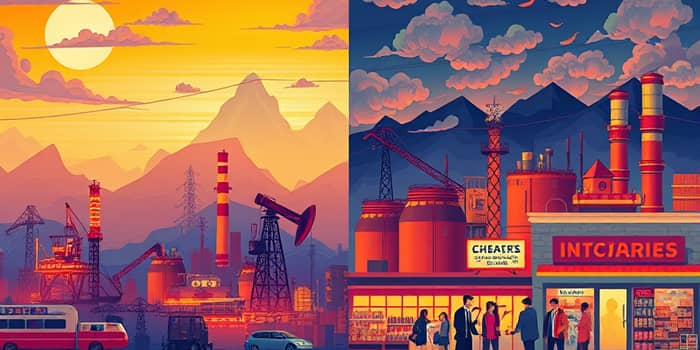
In 2025, inflation has become more than just a headline—it’s a force reshaping entire industries and livelihoods. From the hum of oil refineries to the shuttered storefronts of small businesses, the impact of unrelenting price increases is felt far and wide. Understanding which sectors bear the heaviest burden—and which manage to surge ahead—can empower entrepreneurs, investors, and policymakers to make informed decisions and chart a path through turbulent times.
The latest data shows the U.S. Consumer Price Index at 3.0% annual growth in January 2025, with core inflation holding steady at 3.3%. These figures remain elevated compared to pre-pandemic levels, driven by energy costs, supply chain disruptions, and new tariffs. Fuel oil prices have climbed 6.2% year-on-year, while motor vehicle insurance is up 2.0%, even as apparel and other non-essentials have softened in price—an indication of uneven sectoral impact.
Internationally, Europe’s headline inflation varies dramatically—from just 0.6% in France to 3.0% in the Netherlands—highlighting the role of currency swings, energy dependence, and trade policy. Within the U.S., the Midwest faces the steepest rises, with housing costs up 5.0%, services up 4.6%, and fuel up 3.7%, reinforcing regional disparities.
While some industries adapt or even prosper, others struggle to keep pace with soaring costs, squeezed margins, and softening demand. Below is a snapshot of the hardest-hit sectors.
In these sectors, small businesses bear the brunt as rising operating costs collide with higher borrowing rates. Nearly six in ten cite inflation as their chief challenge, the highest level on record. Manufacturing leaders, grappling with input costs rise sharply, face the paradox of planning hires even as customer orders wane.
Professional service firms, especially those with fewer than five employees, struggle to pass on overhead increases, causing 44% to worry about revenue declines. The auto sector, burdened by new 25% tariffs on imports, could see light-vehicle prices spike over 11%—a blow that ripples through GDP and consumer spending.
Consumer discretionary industries such as apparel and leisure have already felt demand evaporate, with some categories exhibiting outright price deflation. Meanwhile, housing inflation has soared, particularly in the Midwest, forcing many families and landlords into a harsh affordability crunch.
Amid these challenges, several industries demonstrate remarkable resilience, leveraging strong demand or unique pricing power to offset inflationary pressure.
These sectors benefit from steady revenue streams or pricing power like never before, enabling them to absorb or transfer cost increases effectively. Energy firms see record revenues as global supply constraints persist, while banks and insurers capitalize on widened interest margins.
Essential retailers, from grocery chains to household goods manufacturers, maintain steady volumes, passing most of their input costs onto consumers without losing significant market share. Utilities, backed by regulators, adjust rates to reflect higher operational expenses, securing consistent cash flows even in volatile markets.
Businesses in stressed sectors aren’t powerless. By adopting strategic measures, firms can cushion the blow and even find opportunities to innovate and expand.
Many small firms are embracing operational efficiency by automating routine tasks and optimizing supply chains. Others explore adjacent markets—professional services branching into digital offerings, manufacturers shifting to higher-margin custom work, and retailers expanding into subscription models.
Policy engagement also matters. Advocacy for targeted relief—such as temporary tax credits or streamlined emergency funding—can provide vital breathing room. At the same time, tracking regulatory changes in healthcare, housing, and trade allows businesses to anticipate cost shifts and adjust strategies proactively.
As inflationary forces persist, the divide between sectors that struggle and those that thrive will likely widen. Companies that prioritize agility, cost management, and strategic investment stand the best chance of emerging stronger. By understanding the macroenvironment, learning from resilient industries, and implementing practical coping mechanisms, leaders can transform challenges into catalysts for innovation and long-term growth.
References













